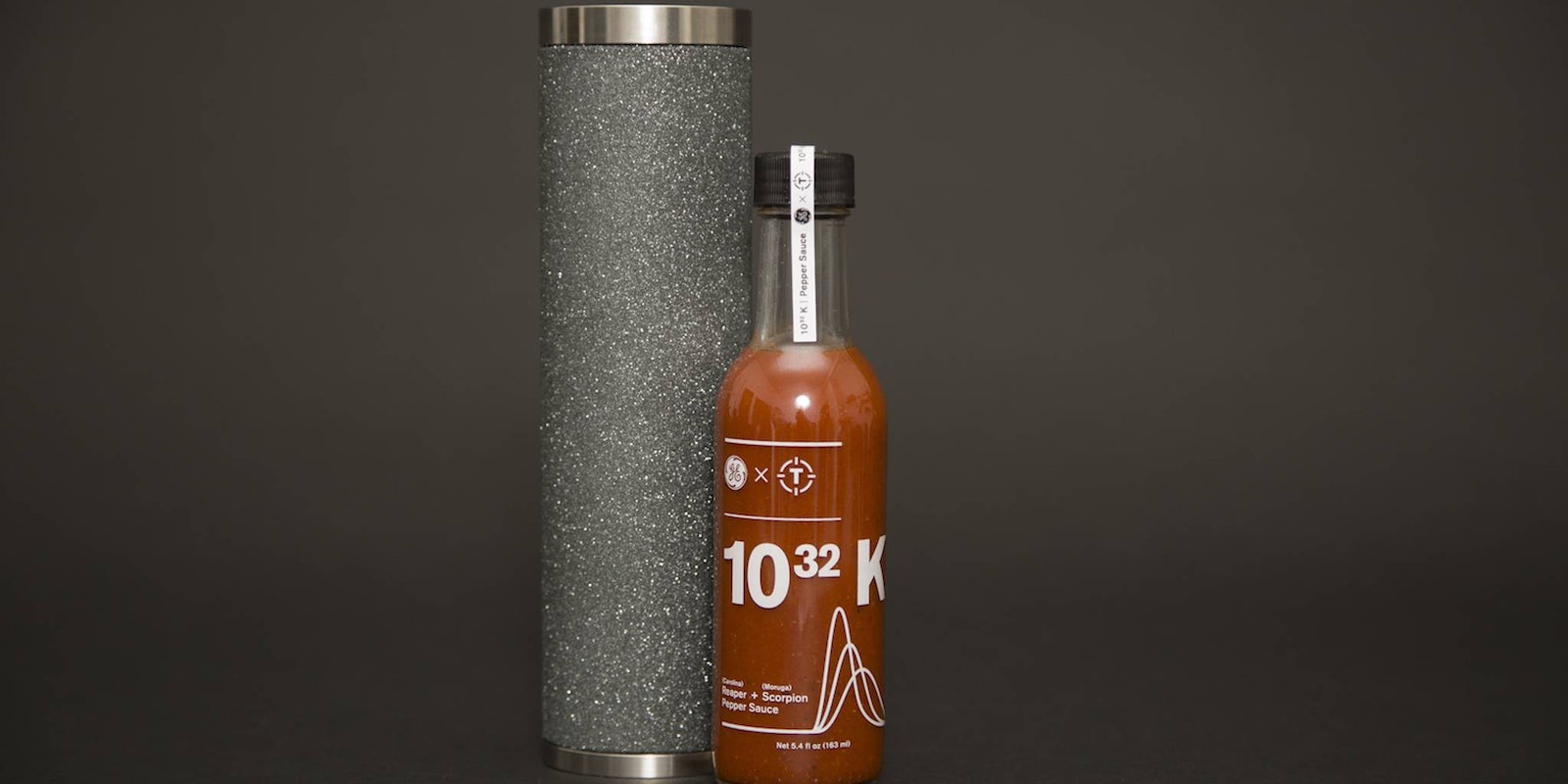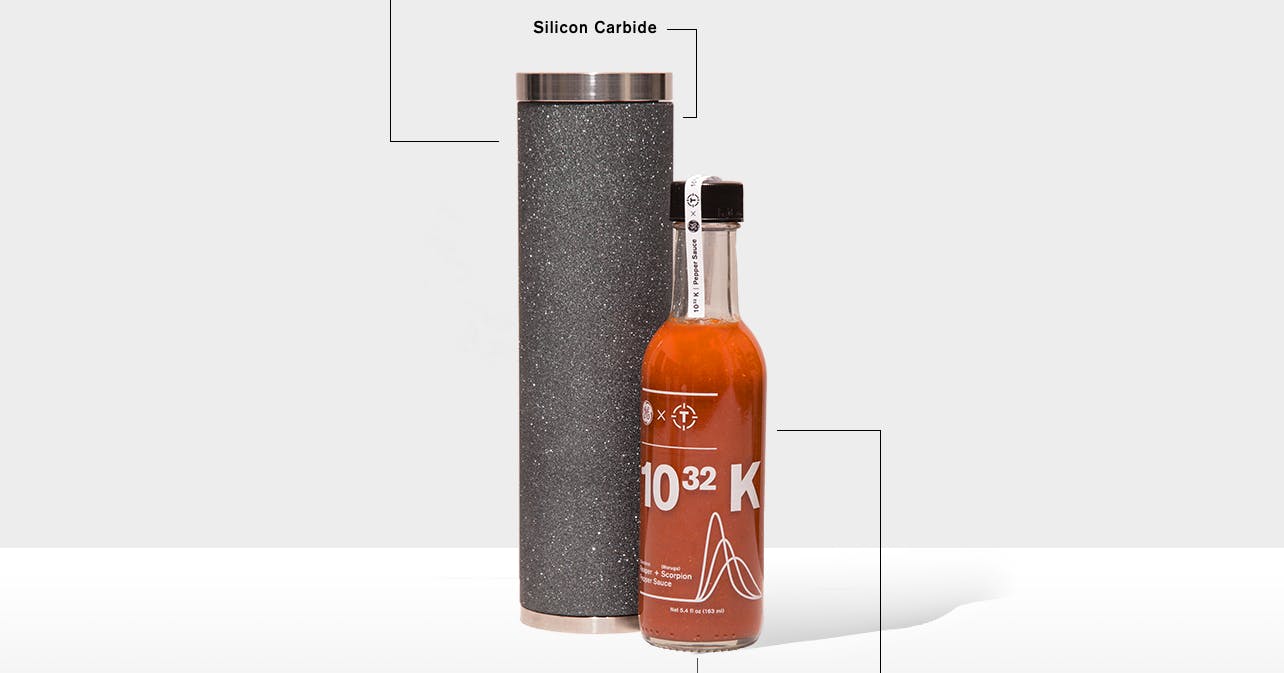GE scientists are trying to educate the world about thermal technology in an unusual and delicious way: Hot sauce.
The company released limited-edition hot sauce called 10^32 Kelvin made with Carolina Reaper and Trinidad Moruga Scorpion peppers, two of the hottest peppers in the world. The sauce is meant to represent “absolute hot,” or the highest temperature matter can withstand before it begins to break down.
“With the hot sauce we wanted to create a conversation starter that would lead people down a path of discovering what we do in our industrial business and how it could relate more on human level with them,” Alex Drinker, global manager of partnerships and innovation at GE, said in an interview.
GE manufactures everything from washing machines to jet engines, and many of its products like those engines and turbines must withstand heat of over 3,000 degrees Fahrenheit. Thermal scientist researchers helped develop a way to explain how and why that actually works by turning to hot sauce.
The hot sauce bottles come in the same type of materials used in manufacturing. A sparkly cylinder containing the hot sauce bottle is made up of Silicon Carbide, an element in GE’s Ceramics Matrix Composites.
The components that go into the ceramics matrix used in jet engines and other parts manufacturing is unique in that it get stronger under heat. Components in other products will “creep” when put under extreme heat, meaning they extend and become larger over time than when first put into a machine, Drinker explained.
Nickel-based superalloys are also used in the hot sauce casing. The superalloys can withstand high temperatures and prevent oxidation, and the top of the hot sauce container is a scaled-down version of a forward operating seal that goes into GE’s leap engines.
The hot sauce is essentially a marketing prop to educate people on what GE actually does—thermodynamics and life sciences can be complicated topics to breakdown and explain to people. At an event this month, GE brought a DNA researcher to explain his work through hot sauce, using a centrifuge to separate different elements of the hot sauce and explaining a similar process as applied to cancer research. Material scientists partnered with the hot sauce creators to explain how supermaterials are used in manufacturing. And GE provided a thermal imaging scanner to take photos of people to better describe how the research is done.
GE teamed up with Thrillist and High River Sauces to create just 1,000 bottles of the hot sauce to be made available for purchase, which have already sold out (but you can try and win one here.) It’s likely GE will have another food science experiment soon. Through experimenting with food, GE is hoping to make science more easily digestible.



